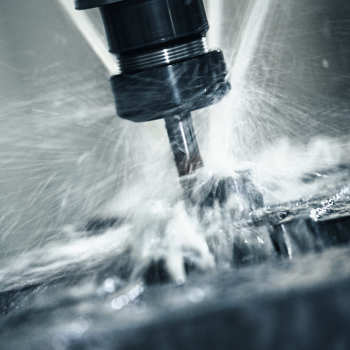
In the world of precision manufacturing, Computer Numerical Control (CNC) machines have revolutionized the way we create complex parts with precision and efficiency. Among the various CNC machines available, 3, 4, and 5-axis machines stand out for their versatility and capability to handle a wide range of parts. Each type of machine offers unique advantages and is suited for different applications. MPC uses all three, but what are the differences? What machine might your part be made on at MPC?
3-Axis CNC Machines
Overview
3-axis CNC machines are the most common type and are characterized by their ability to move tools along three axes: X (horizontal), Y (vertical), and Z (depth). This setup allows for basic cutting, drilling, and milling operations.
Types of Precision Parts Produced
- Flat Panels and Plates: 3-axis CNC machines are ideal for creating components for things like circuit boards and signage.
- Simple Mechanical Parts: Used for producing basic shapes such as brackets, housings, and small mechanical components.
- 2D Parts with Simple Profiles: Perfect for engraving, etching, and cutting out simple designs.
Industries Served
3-axis machines are widely used in applications where precision along one key axis is important. MPC will use 3-axis machines to keep costs down where possible for relatively simple parts that do not require turning operations.
4-Axis CNC Machines
Overview
4-axis CNC machines build on the 3-axis configuration by adding a fourth axis (usually the A-axis), which rotates the workpiece. This additional axis enables the machine to perform more complex operations, including the machining of cylindrical or irregularly shaped parts.
Types of Precision Parts Produced
- Cylindrical Parts: Such as shafts, spindles, and other rotationally symmetric components. MPC produces parts like these for many of our automotive, medical, and aerospace industry customers.
- Relatively Complex Profiles: Allows for the creation of intricate designs and patterns on multiple sides of a part.
- Multi-Sided Components: Enables the machining of features on multiple faces of a workpiece without needing to manually reposition the part, thus saving time and effort.
Industries Served
4-axis CNC machines are commonly used in automotive, aerospace, and other heavy industries, where parts are often rotationally symmetrical and require high levels of precision on multiple axes and elements.
5-Axis CNC Machines
Overview
5-axis CNC machines add two additional axes (usually the B and C axes) to the already-capable 4-axis template which can tilt the tool and rotate the workpiece. This configuration allows for even greater complexity and precision, as the machine can approach the workpiece from virtually any angle, facilitating almost any kind of geometric feature.
Types of Precision Parts Produced
- Complex Geometries: Capable of producing intricate and highly detailed parts with complex curves and angles, such as turbine blades, aerospace components, and medical implants. MPC uses 5-axis CNC machines to make complex parts with spherical, curved, and helical features in the medical industry.
- Precision Parts with Multiple Angles: Ideal for parts requiring precise machining from various angles without the need for a machinist to manually reposition the part.
- Highly Detailed Prototypes: Allows for the rapid production of prototypes with complex features and fine details. MPC has been involved in numerous medical prototyping projects that leverage the unique capabilities of 5-axis CNC machines.
Industries Served
5-axis CNC machines are favored in high-precision industries like aerospace, defense, medical device manufacturing, and high-end automotive sectors. They are essential for producing parts that demand high accuracy and complex geometrical shapes. MPC’s focus on the highest of precision means that we use 5-axis CNC machines far more than either of the other types.
Choosing the Right CNC Machine
The choice between a 3, 4, or 5-axis CNC machine depends on several factors, but mostly it comes down to the complexity of the part and the volume required. High complexity and high volume are a recipe for the use of 4- or 5-axis machines. Very high volume might even necessitate the use of a multi-spindle CNC machine, which MPC use frequently.
No matter your requirement, these machines allow MPC to match your part with our best machining solution. Whether you require a steel plate for scientific research apparatus, a shaft for an aerospace turbine, or a highly-complex implantable stainless steel part, MPC’s CNC machines of 3-, 4-, and 5-axes allow us to maximize precision, minimize cost, and optimize lead time.

